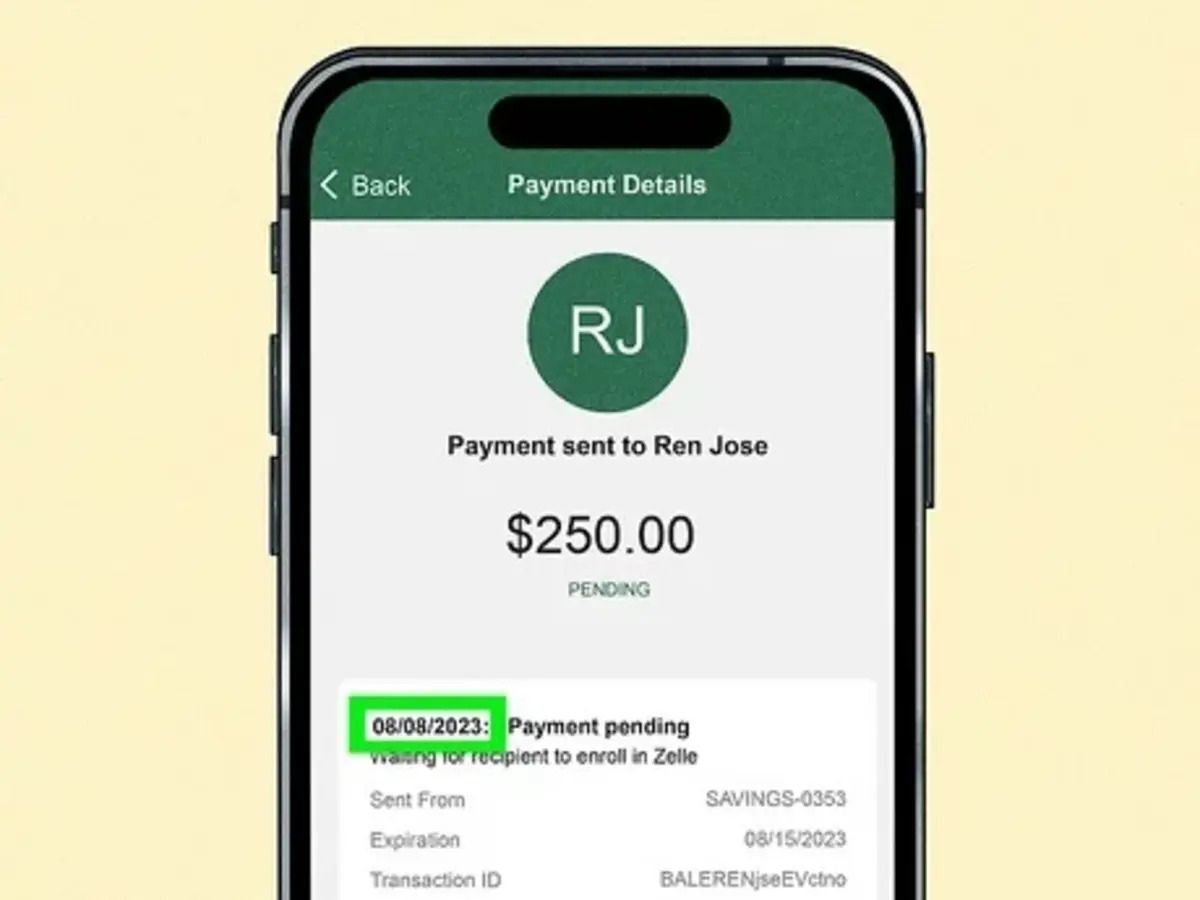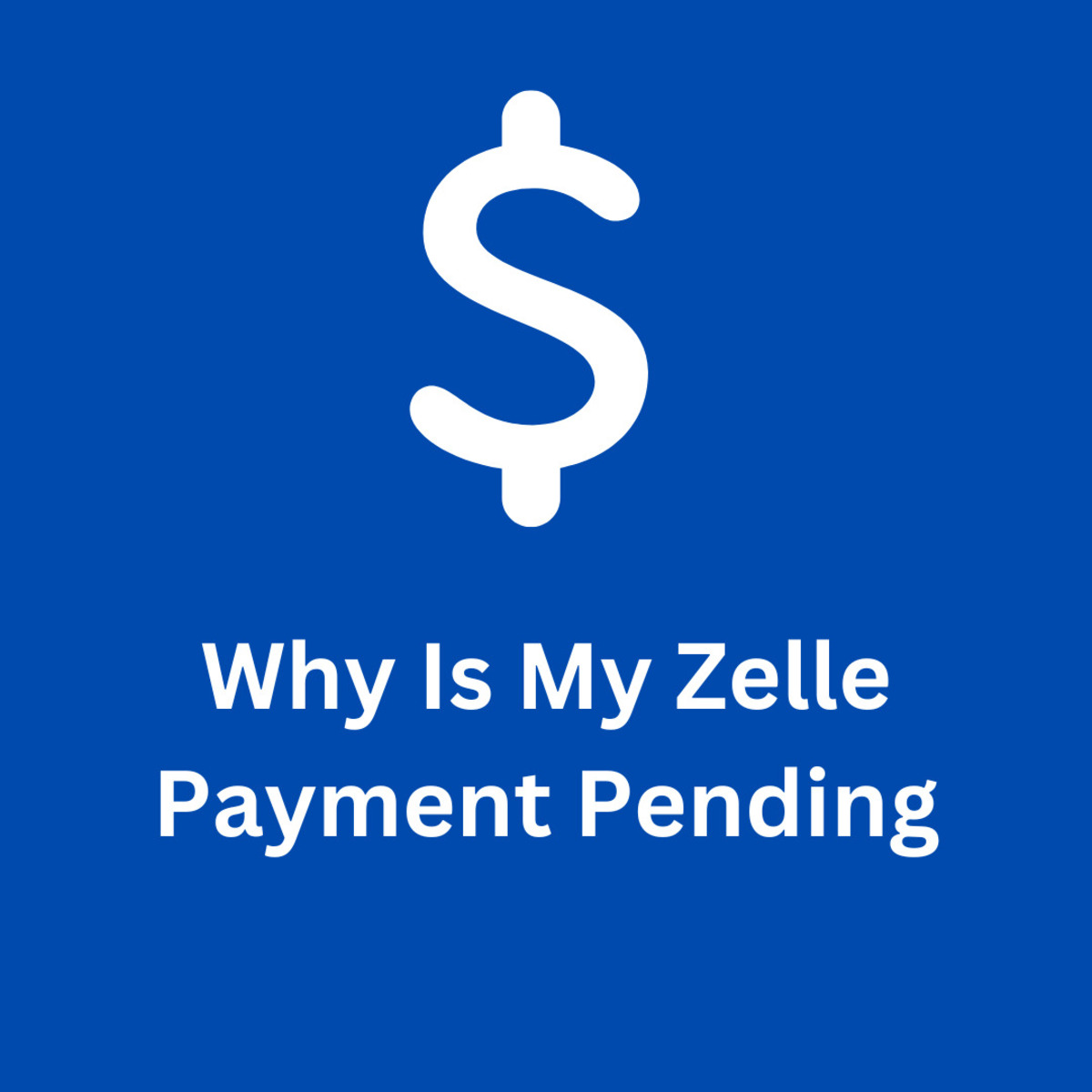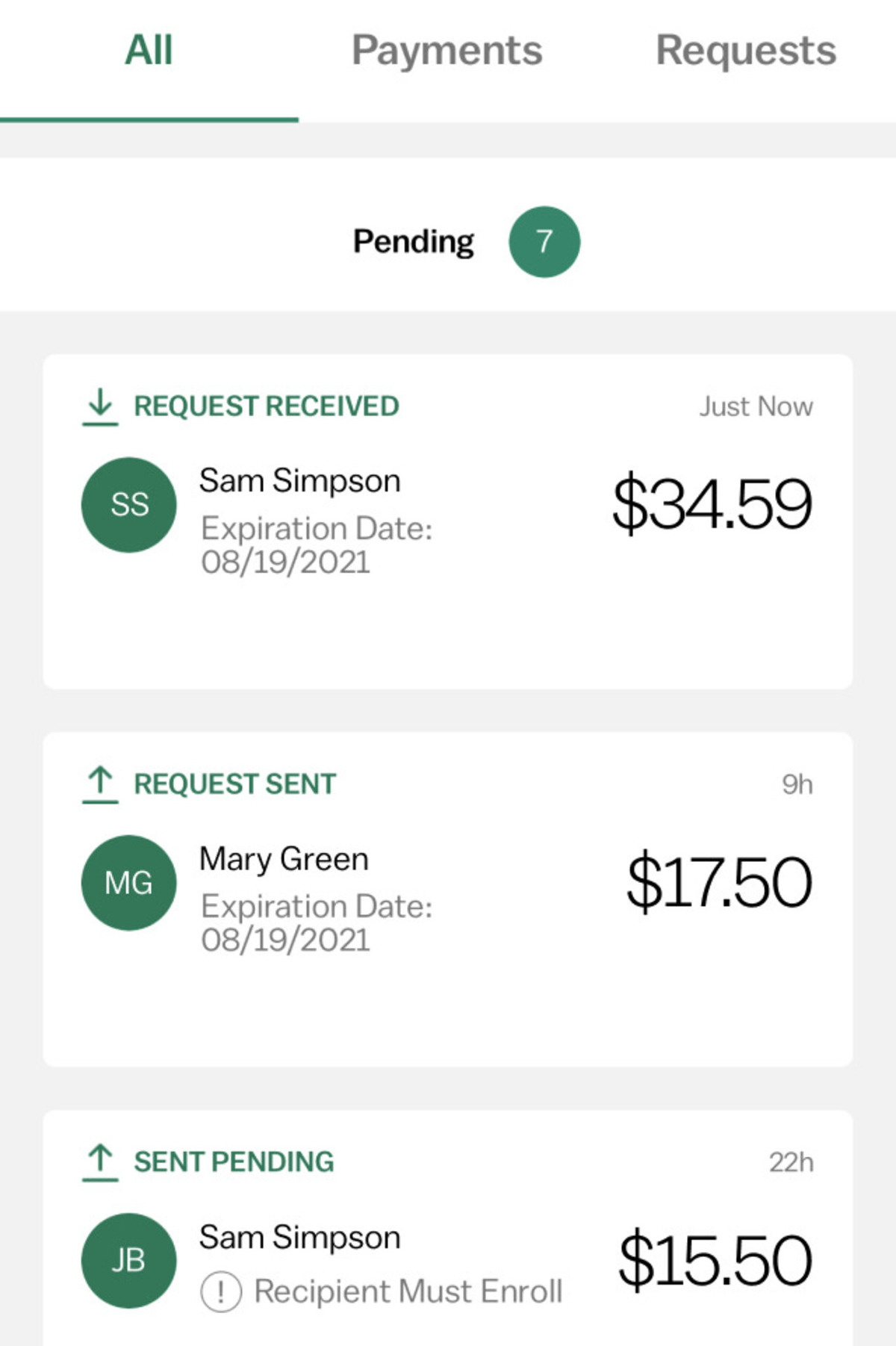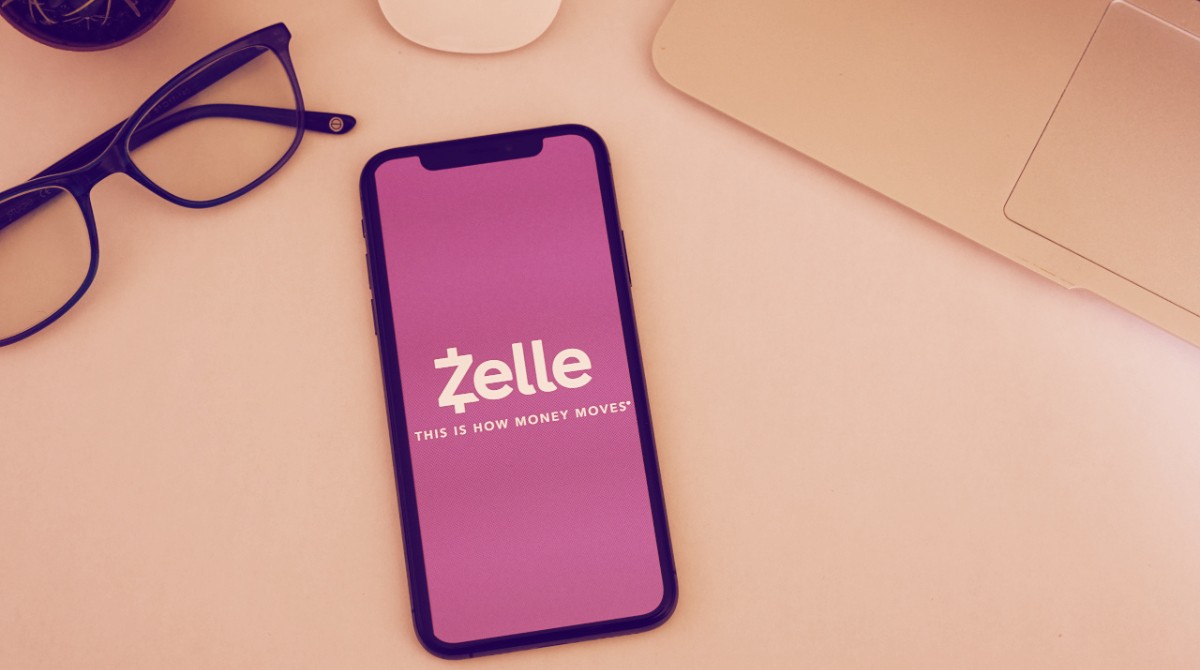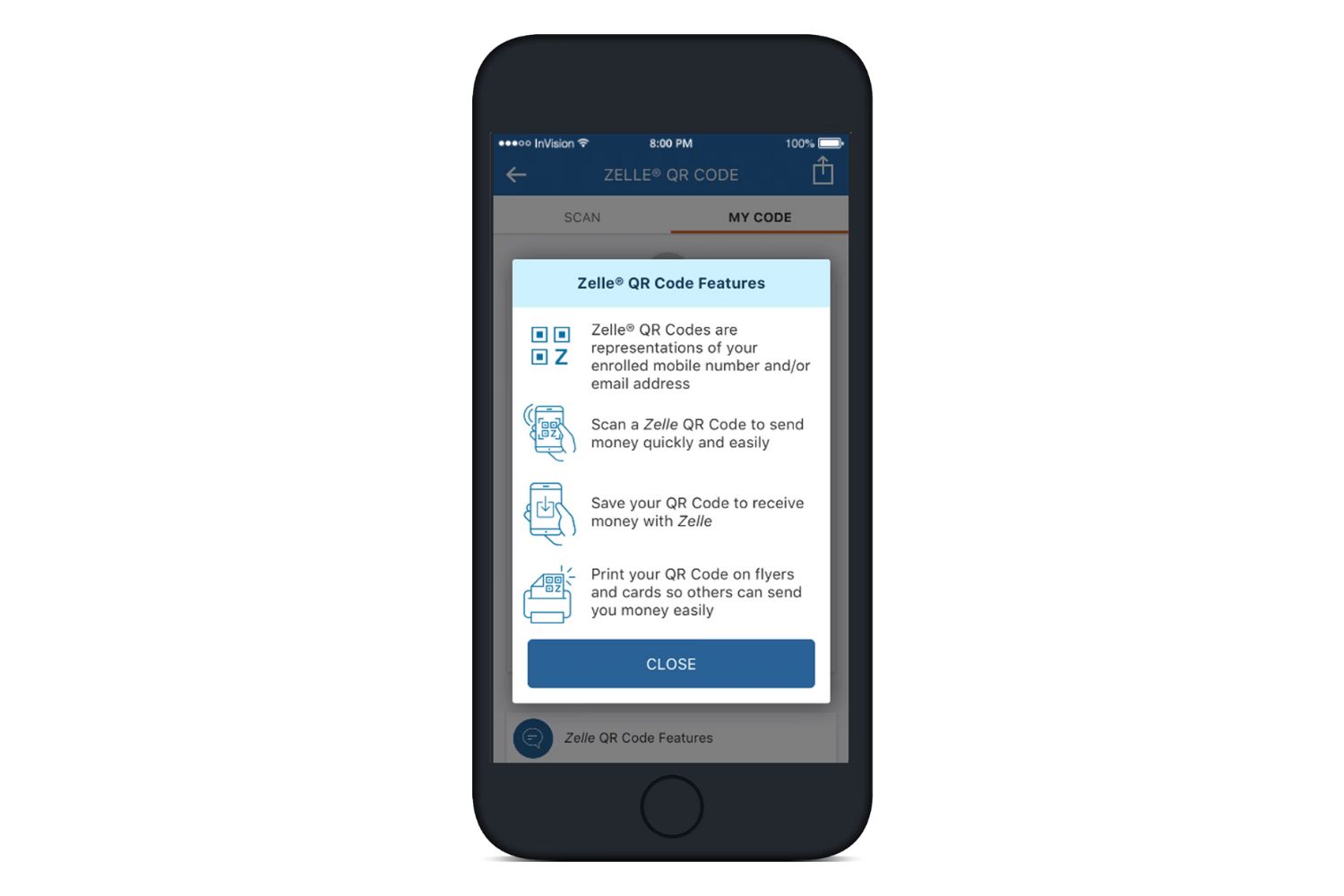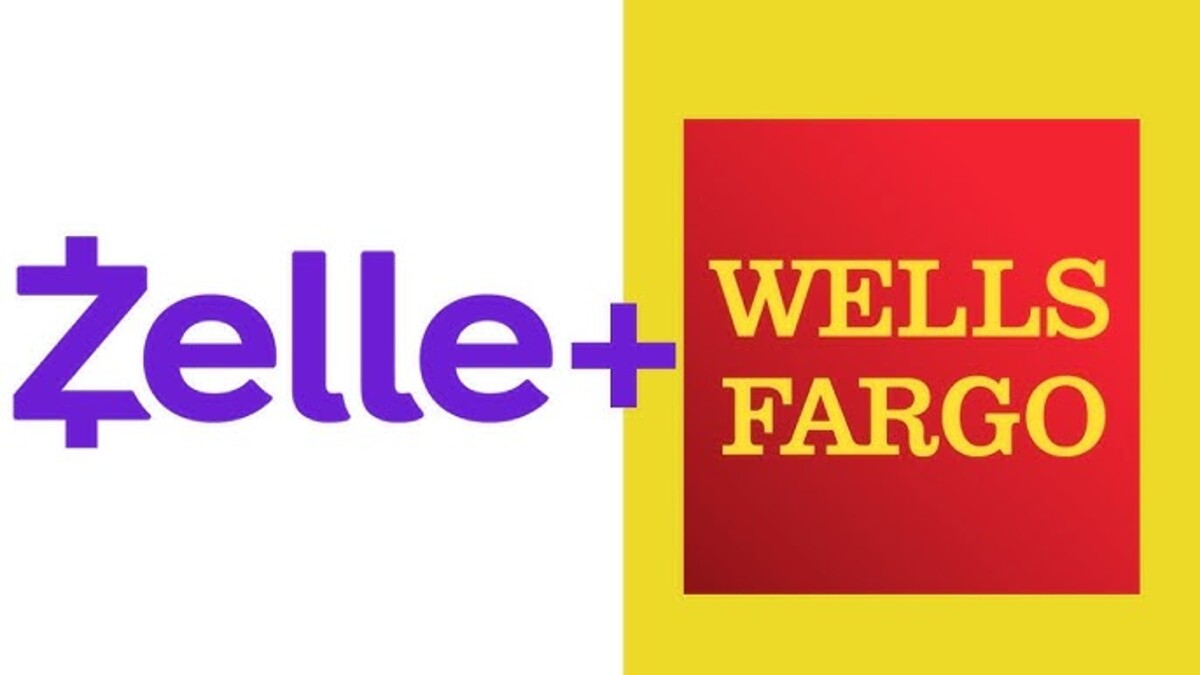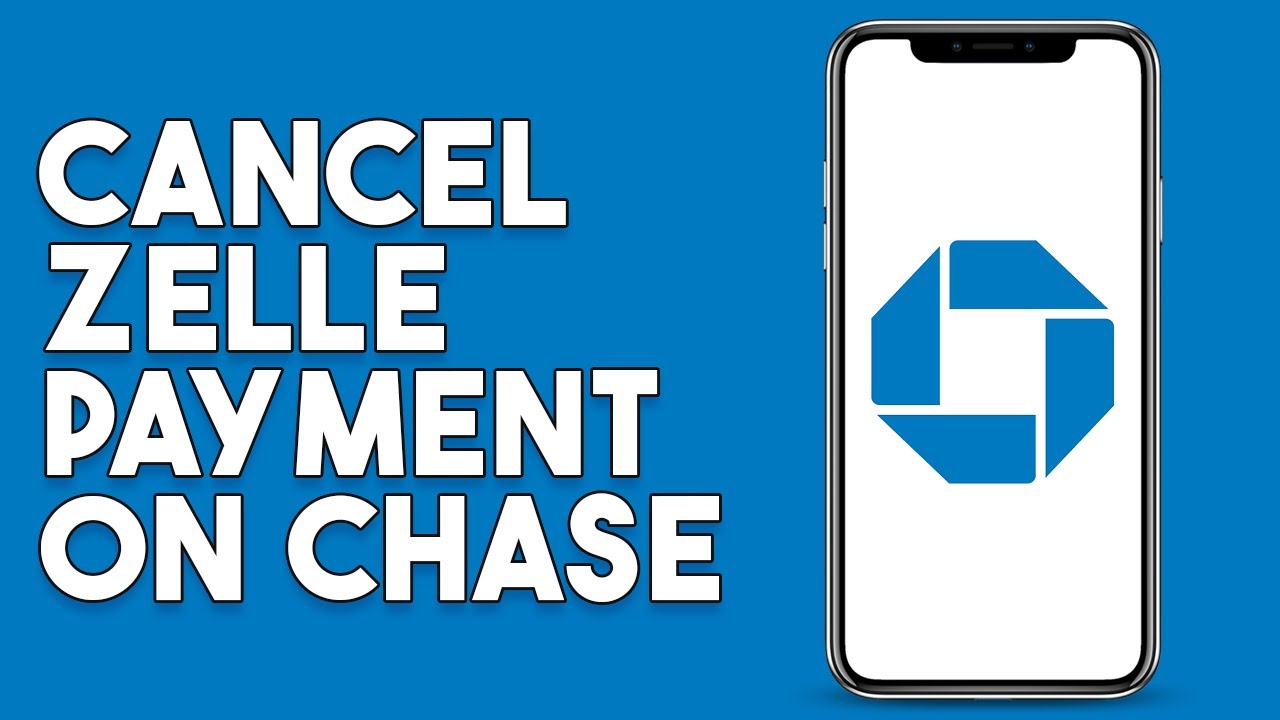Introduction
Welcome to our guide on Zelle pending transactions. If you’ve ever used Zelle, you may have come across the term “pending” when sending or receiving money. But what does it actually mean? How long does a transaction stay in the pending state? And what factors can affect the processing time? In this article, we’ll answer these questions and provide you with some tips to speed up Zelle pending transactions.
Zelle is a popular digital payment platform that allows users to send and receive money directly from their bank accounts. It’s fast, convenient, and widely accepted by various banks and credit unions across the United States. With Zelle, you can split bills, pay rent, or simply send money to family and friends without the hassle of writing checks or handling cash.
When you initiate a transaction through Zelle, the funds are typically transferred instantly. However, in some cases, the transaction may be marked as “pending.” This simply means that the transfer is currently being processed and hasn’t been completed yet. Pending transactions can occur for a variety of reasons, such as network issues, security checks, or verification processes.
The duration of a Zelle transaction in the pending state can vary depending on several factors. In general, most transactions clear within a few minutes or up to one business day. However, there are instances where a transaction may stay pending for an extended period of time. Understanding the reasons behind a pending transaction and the factors that can affect its processing time can help alleviate any concerns or frustrations you may have.
In the following sections, we will explore what “pending” means in the context of Zelle, how long a transaction can remain in the pending state, and the factors that can influence the processing time. We will also provide some useful tips to expedite the processing of your Zelle transactions and address common issues that may arise when dealing with pending transactions. Let’s dive in!
How Does Zelle Work?
Zelle is a peer-to-peer payment service that allows users to send and receive money directly from their bank accounts. It works seamlessly within participating banks’ mobile banking apps or through the standalone Zelle mobile app. Here’s how the process typically works:
- Registration: To use Zelle, you need to have a bank account with a participating financial institution. Most major banks in the United States offer Zelle as a feature within their mobile banking apps. If your bank supports Zelle, you’ll need to enroll and link your bank account to your Zelle profile.
- Sending Money: Once you’re registered, you can initiate a payment by selecting the recipient from your contact list or manually entering their email address or phone number. You can also specify the amount you want to send and include an optional memo or note. Zelle will verify the recipient’s information and allow you to review the transaction details before confirming.
- Notification: Once the payment is sent, the recipient will receive a notification via email or text message, depending on the contact information provided. They will be prompted to accept the payment and provide their bank details to receive the funds. If the recipient is already enrolled in Zelle, the funds will be deposited directly into their bank account.
- Receiving Money: If someone sends you money through Zelle, you will receive a notification with instructions on how to accept the payment. If you’re already enrolled in Zelle, the funds will be deposited directly into your bank account. If not, you’ll need to register and link your bank account to receive the funds.
It’s important to note that both the sender and recipient need to have bank accounts with participating institutions or be registered users of the Zelle standalone app. Transactions are typically processed instantly, with the funds being transferred directly between the sender and recipient’s bank accounts. There are no fees associated with using Zelle for standard transactions, although some banks may impose certain limits on the amount you can send or receive in a single transaction or within a specific time frame.
Now that we’ve covered the basics of how Zelle works, let’s explore the meaning of “pending” in Zelle transactions and how long you can expect a transaction to stay in that state.
What Does “Pending” Mean in Zelle?
When you see a transaction marked as “pending” in Zelle, it means that the transfer is currently being processed and has not been completed yet. This status indicates that the transaction is still in progress and has not been finalized.
There can be various reasons why a transaction may be in the pending state. Some common factors that can contribute to a pending transaction in Zelle include:
- Network Delays: Sometimes, the processing of a Zelle transaction can be delayed due to network congestion or connectivity issues. These issues can arise from the sender’s or recipient’s bank, Zelle’s servers, or the overall internet infrastructure. While most transactions are processed instantly, these delays can cause a pending status.
- Security Checks: Zelle places a high emphasis on security and fraud prevention. As a result, certain transactions may undergo additional security checks to verify the authenticity of the payment and protect users from potential scams or unauthorized activity. These security checks can contribute to a pending transaction status.
- Verification Processes: In some cases, Zelle may require additional verification steps for certain transactions, such as larger transfers or payments to new recipients. These verification processes can involve confirming the sender’s identity, verifying the recipient’s bank account details, or ensuring compliance with any regulatory requirements. During these verification procedures, the transaction may remain in a pending state.
It’s important to note that a pending status does not necessarily indicate a problem or an issue with the transaction. In many cases, pending transactions will proceed to completion within a short period of time.
Next, let’s explore how long a Zelle transaction typically stays in the pending state before it is completed.
How Long Does Zelle Stay Pending?
The duration that a Zelle transaction remains in the pending state can vary depending on several factors. In most cases, Zelle transactions are processed and completed within minutes. However, there are instances where a transaction may stay pending for a longer period of time.
Typically, the average pending time for Zelle transactions is around 5 to 30 minutes. This means that the funds will be transferred and reflected in the recipient’s bank account within this time frame. However, it’s important to keep in mind that this is just an estimate, and the actual pending time can vary based on various factors.
In certain cases, pending transactions can take up to one business day to clear. This can happen due to several reasons, including network delays, security checks, or verification processes. For example, if there are connectivity issues between Zelle’s servers and the participating banks, it may cause a delay in processing the transaction, resulting in an extended pending period.
If your Zelle transaction remains pending for an unusually long time, it’s a good idea to check for any notifications or alerts from Zelle or your bank. They may provide updates on the status of the transaction and any potential issues that need to be addressed. You can also contact your bank’s customer support or Zelle’s customer service for further assistance in resolving the pending transaction.
It’s worth noting that there can be instances where a Zelle transaction stays pending indefinitely. While this is rare, it can occur due to technical glitches or exceptional circumstances. In such cases, it’s best to reach out to Zelle customer support to investigate and resolve the issue.
Now that we understand how long a Zelle transaction can remain pending, let’s delve into the factors that can affect the pending time.
Factors That Affect Zelle Pending Time
Several factors can influence the pending time of a Zelle transaction. Understanding these factors can help you have a better idea of why a transaction may be taking longer to process. Here are some key factors that can affect the pending time:
- Network Congestion: High network traffic or congestion can lead to delays in transaction processing. If Zelle’s servers or the participating banks are experiencing heavy usage, it can result in extended pending times. Network congestion can be temporary and may resolve itself once the network load reduces.
- Recipient Bank’s Processing: The processing speed of the recipient’s bank can also impact the pending time. If the recipient’s bank has slower internal processing or requires additional security checks, it can cause delays in funds being credited to their account.
- Security Checks and Verification: Zelle’s security measures and verification procedures can contribute to pending transactions. If a transaction triggers additional security checks or requires verification of the sender or recipient’s information, it may take longer for the transaction to clear. This is done to ensure the safety and integrity of the payment.
- Transaction Amount: The amount being transferred through Zelle can affect the pending time. Larger transactions, especially those exceeding certain thresholds set by Zelle or the participating banks, may undergo additional scrutiny and verification processes, leading to a longer pending time.
- New Recipients: When sending money to a new recipient, Zelle may require additional verification steps to ensure that the recipient’s bank account information is valid and accurate. This can result in a longer pending time for the first transaction with a new recipient.
It’s essential to keep in mind that while these factors can affect the pending time, most Zelle transactions are processed quickly and smoothly within the expected time frame. However, if you notice a significant delay in the processing of your transaction, it is advisable to contact your bank or Zelle customer support for assistance.
Next, we will provide some useful tips to expedite the pending time for your Zelle transactions and address common issues that may arise during this process.
Tips to Speed Up Zelle Pending Transactions
If you’re experiencing delays with Zelle pending transactions and want to expedite the processing time, here are some tips to help speed up the process:
- Check Network Connectivity: Ensure that you have a stable internet connection and that your mobile device or computer is connected to a strong Wi-Fi signal. Network issues can contribute to delays in transaction processing.
- Verify Recipient Information: Double-check the recipient’s email address or phone number to make sure it’s accurate. Incorrect or outdated contact information can lead to processing delays or failed transactions.
- Use Business Hours: Initiate Zelle transactions during the recipient bank’s business hours. Transactions submitted outside of regular banking hours may experience delays as they will be processed on the next business day.
- Note Transaction Details: Provide a clear and concise memo or note for the transaction. This can help streamline the verification process and ensure accurate processing of the payment.
- Reach Out to Customer Support: If a Zelle transaction remains in the pending state for an unusually long time, contact your bank’s customer support or reach out to Zelle’s customer service for assistance. They can provide insights into any potential issues or help facilitate the resolution of the pending transaction.
- Avoid Sending Large Amounts: If possible, consider sending smaller transaction amounts to reduce the likelihood of triggering additional security checks or verification processes that can prolong the pending time.
- Verify Sender’s Information: If you’re the recipient of a Zelle transaction and it’s stuck in the pending state, double-check that the sender has entered accurate information. In some cases, errors in the sender’s details can cause delays in completing the transaction.
By following these tips, you can improve the chances of expediting the pending time for your Zelle transactions. However, it’s important to note that some factors, such as network congestion or security checks, may be beyond your control. In these cases, patience may be required as the transaction undergoes the necessary processes for completion.
In the next section, we’ll address common issues that can arise with Zelle pending transactions and provide guidance on how to cancel a pending transaction if needed.
Common Issues with Zelle Pending
While Zelle is generally a reliable and efficient payment platform, there are some common issues that users may face when dealing with pending transactions. Understanding these common issues can help you navigate any challenges that may arise during the Zelle transaction process. Here are a few common issues with Zelle pending:
- Extended Pending Time: Some users may experience longer than expected pending times for Zelle transactions. While most transactions clear within minutes or up to one business day, certain factors such as network congestion, security checks, or verification processes can contribute to extended pending times.
- Recipient Not Enrolled: If the recipient is not enrolled in Zelle, they will need to register and link their bank account to receive the funds. This can cause a delay in completing the transaction, as the recipient will need to go through the enrollment process before the funds can be deposited.
- Incorrect Payment Details: Inputting incorrect payment details, such as the recipient’s email address or phone number, can result in a failed transaction or a pending status. It’s essential to verify the accuracy of the recipient’s information before initiating a payment.
- Network or Technical Issues: Occasionally, Zelle may experience network or technical issues that can cause delays in transaction processing or affect the availability of the service. During these periods, pending transactions may take longer to complete.
- Security Concerns: In order to ensure the safety of transactions, Zelle may subject certain payments to additional security checks. While these checks are in place to protect users from fraud, they can result in pending transactions that require further verification.
If you encounter any of these issues with Zelle pending transactions, here are some recommended steps to address them:
- Check for any notifications or messages from Zelle or your bank regarding the transaction. They may provide insights into the issue or offer guidance on how to resolve it.
- Verify that you have entered the correct recipient details, such as email address or phone number. If there is an error, cancel the pending transaction and initiate a new one with the accurate information.
- If the recipient is not enrolled in Zelle, communicate with them and guide them through the enrollment process. Once they have successfully enrolled, you can re-initiate the transaction.
- If the pending time exceeds what is considered normal, reach out to your bank’s customer support or contact Zelle’s customer service for further guidance and assistance.
Next, we’ll explore how to cancel a Zelle pending transaction if the need arises.
How to Cancel a Zelle Pending Transaction
If you need to cancel a pending transaction in Zelle, it’s important to act quickly, as there is only a limited window of time during which cancellation is possible. Here’s a step-by-step guide on how to cancel a Zelle pending transaction:
- Check Transaction Status: First, verify that the transaction is still in the pending state by accessing your transaction history or reviewing any notifications or alerts from Zelle or your bank. Remember, once the transaction has been completed and is no longer pending, it cannot be canceled.
- Contact Your Bank: Reach out to your bank’s customer support as soon as possible to inform them of your request to cancel the pending transaction. Provide them with the necessary details, including the transaction amount, date, and the recipient’s information.
- Provide Documentation: Some banks may require you to provide additional documentation to support your cancellation request. This can include screenshots of the pending transaction, transaction ID, or any other relevant information that proves your intention to cancel the transaction.
- Follow Bank’s Instructions: Follow the instructions provided by your bank’s customer support on how to cancel the pending transaction. They may require you to complete a cancellation form or take other necessary steps to initiate the cancellation process.
- Monitor Account Activity: Keep an eye on your bank account activity and transaction history to ensure that the canceled transaction is reflected accordingly. If you notice any discrepancies or if the transaction is not canceled within a reasonable timeframe, contact your bank’s customer support again for further assistance.
It’s essential to note that not all banks offer the option to cancel Zelle pending transactions, and the possibility of cancellation may depend on their individual policies and procedures. Be sure to reach out to your bank directly to determine their specific requirements and processes for canceling a pending Zelle transaction.
Remember, cancellation requests must be made promptly, as once the transaction has been completed and is no longer pending, it cannot be reversed. Therefore, it’s crucial to review all transaction details carefully before confirming the payment to avoid the need for cancellation.
Now that we’ve explored how to cancel a Zelle pending transaction when necessary, let’s wrap up with a summary of the key points discussed in this article.
Conclusion
In this guide, we’ve explored the concept of “pending” in Zelle transactions and discussed various aspects related to Zelle pending time. We learned that a pending status indicates that the transaction is currently being processed and has not yet been completed. The average pending time for Zelle transactions is typically around 5 to 30 minutes, although certain factors can result in longer pending periods.
Several factors can affect the pending time, including network congestion, security checks, verification processes, transaction amount, and sending money to new recipients. While most Zelle transactions are processed quickly, issues such as extended pending times, recipients not being enrolled, incorrect payment details, network or technical issues, and security concerns can occasionally arise.
To expedite the pending time for Zelle transactions, we provided some helpful tips, such as ensuring network connectivity, verifying recipient information, using business hours, providing clear transaction details, reaching out to customer support if needed, and avoiding sending large amounts. We also discussed common issues with Zelle pending transactions and steps to cancel a pending transaction if necessary.
It’s important to remember that each bank may have its own policies and procedures regarding Zelle pending transactions, so it’s advisable to consult your bank’s customer support for specific guidance.
Overall, Zelle provides a convenient way to send and receive money, and most transactions are processed smoothly and quickly. However, if you encounter any issues or have further questions, don’t hesitate to reach out to your bank or Zelle customer support for assistance.
We hope this guide has provided you with valuable insights into Zelle pending transactions and has helped you navigate any challenges that may arise during the process. May your Zelle transactions be seamless and hassle-free!







